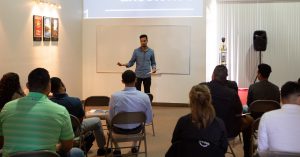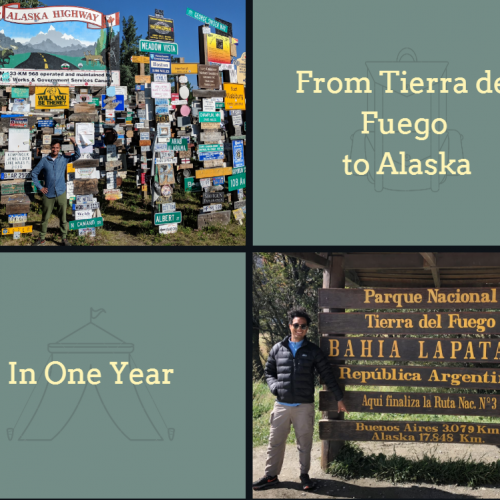What is my leadership style?, or more importantly, what type of leader do I want to be? I came to realize this is not an easy question to answer, so let’s start from the beginning, why am I even asking myself this?
It was October of 2018, and my friends and I were 8 hours away from home, camping at a beach in México; the sky was blue, the ocean crystal clear, and the weather was warm. We were all talking, enjoying the shade at our camping spot when my friend Hugo asked me: “Angel, what are your goals for the future?” Without hesitation, I replied: “I want to influence people, I want to become a great leader”. My answer impressed me, this was not something I had consciously thought before or something I knew I aspired to be, but maybe due to the couple of beers I had or because of the beautiful place we were at, I felt inspired and gave that answer.
Months later, during December, while still thinking about the response I gave to Hugo, my opportunity came. While at a conference, appropriately called Best Year Ever, I learned about a leadership institute in Cleveland whose main focus was to teach people to lead by using the power of positive questions. The method they used was called Appreciative Inquiry, and I was intrigued.
During the conference, I inquired more about it and learned that the practice of Appreciative Inquiry is based on research that indicates that organizations move in the direction of what they talk about and ask questions about. Meaning: change the questions, change the conversations, change the outcome. I thought: this is perfect! I don’t need to know the answers, just what questions to ask. I signed up right there for a one year course, not really knowing what to expect, I just knew I had to try this out.
One of the requirements to get accepted into the institute is that you have to have places in mind where you will use this method, you can’t just join to learn without thinking about where to use this. So I got to work, I had to tackle two main challenges: improve my non-existent public speaking skills and find clients. For my first challenge, I joined Toastmasters to practice public speaking. For the second one, I started networking to find clients. Fast forward 3 months to March 2019 and I had my first client and was leading my first group. And what type of leader was I becoming? Well apparently now I was a leader that asked questions and not much else. I know, this sounds weird, what type of leader talks for less than 20 minutes on an event that lasted over 2 hours? I don’t know but it worked perfectly!
Like I had been taught, I led the group by asking questions, moving them in the direction I wanted with each conversation they had (at school they call it “orchestrating conversations”). All with the goal to help them figure out what their purpose at the company was, their strengths, goals, their ideal future, and more importantly, how my client could help them achieve it. Questions such as:
- Why is it important for you to be here today?
- Remember a time or moment in your life when you were at your best, a time when you fully came alive, how did that moment look like?
And more were used in order to achieve this.
The results were incredible, after 2.5 hours, people that didn’t know each other well when they came in, had become great friends, bonding over past struggles, aspirations, and goals. And more importantly, my client knew what he needed to do to help his staff achieve their goals and ideal future at the company.
While writing this article, I completed a pathways questionnaire about my leadership style, called Leadership Style Scoring Guide, the results were that my style was, in almost equal parts:
- Democratic
- Coaching
- Altruistic
- Pacesetting and
- Innovative
Some descriptions of the styles that stood out were:
- This leader motivates by providing opportunity for participation
- This leader excels with individuals or groups that have not yet realized their full potential
- This style is effective in creating a positive culture and promoting high morale
- This leader does not feel it necessary to communicate a lot of detailed instructions
- This leader invites collaborative conversation
I believe this is accurate since the method of leadership I’m learning, and I aspire to be, can be many things, but never forgetting that a leader’s job is to make the strengths of people effective and their weaknesses irrelevant by focusing on the positive – appreciating people’s strengths instead of trying to correct their weaknesses.




